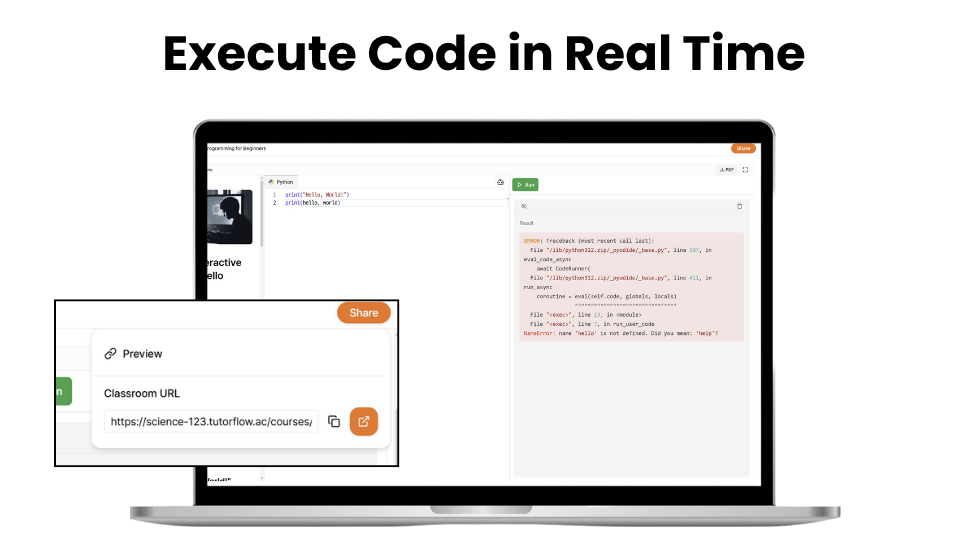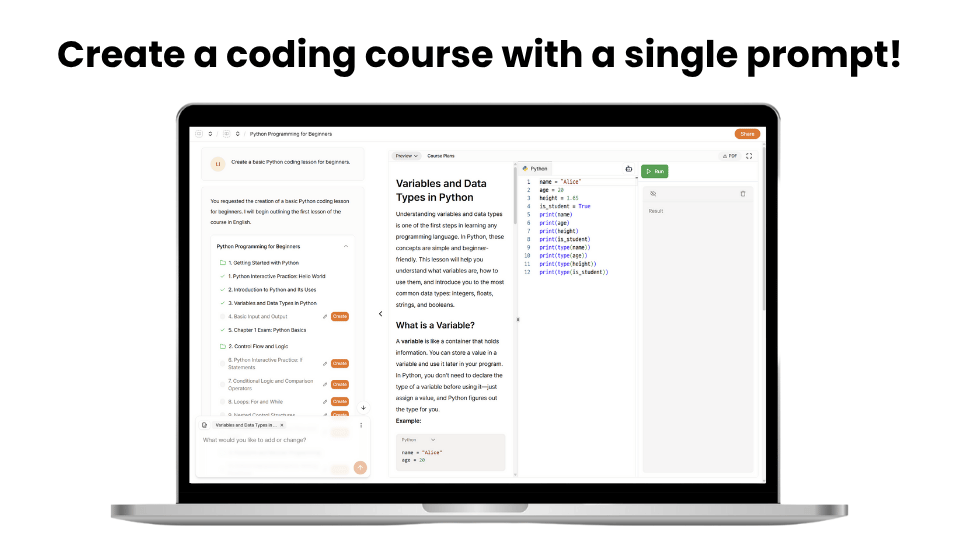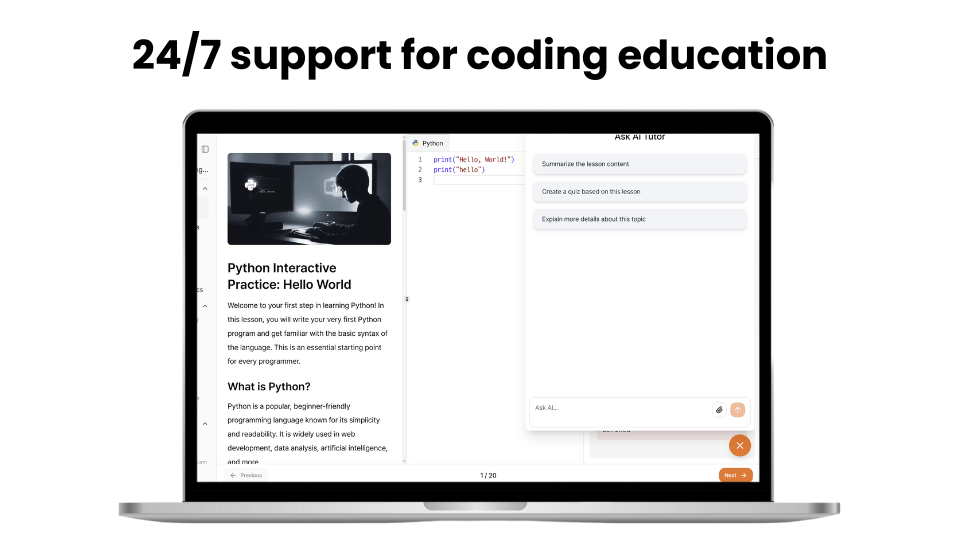
Programming is no longer just about writing lines of code. It's about understanding how to work alongside intelligent systems. As AI tools become part of everyday development, educators face the challenge of preparing students for a world where collaboration with machines is just as important as mastering the fundamentals. This shift isn't about replacing programming skills, but about teaching students how to combine human creativity with AI's technical power to build solutions faster and smarter.
AI Coding Education and the Rise of Vibe Coding
AI coding education is rapidly reshaping how programming is taught, blending traditional instruction with AI-powered coding platforms for education. One emerging trend is "vibe coding," which gained attention through AI researcher Andrej Karpathy's insights in early 2025. Vibe coding represents an AI-first approach to software development, where developers communicate their intentions through natural language prompts, allowing AI to generate functional code. Instead of writing code line by line, programmers describe what they want to build, and large language models translate these descriptions into working applications.
What makes this shift remarkable is that people without deep programming experience can now create software, as highlighted in Forbes. Karpathy captures the spirit of it: “fully giving in to the vibes, embracing exponentials, and forgetting that the code even exists.” It's fast, creative, and heavily focused on rapid prototyping, letting humans handle design and problem-solving while AI takes care of the technical grind.
How AI is Changing Coding Education
The Current State of AI in Programming
AI coding tools have matured quickly. Platforms like GitHub Copilot, Cursor, and Anthropic's Claude are now doing far more than auto-complete. According to KS Red, these tools can already generate applications from natural language, debug errors instantly, propose architecture improvements, and even write full testing suites.
Industry watchers suggest that within a few years, most developer interaction with LLMs will happen inside the terminal instead of traditional IDEs. This shift signals a move toward conversational, AI-first environments where machines take on the heavy lifting and humans focus on high-level direction.
The Educational Challenge: Teaching Coding in an AI World
Traditional Coding Education vs. Modern Needs
For decades, programming courses focused on syntax memorization, algorithm design, and manual debugging. But with AI now writing and fixing code, those skills aren't enough on their own. As highlighted in Hey World's analysis, students must now learn how to collaborate with AI tools to tackle real-world problems.
This shift creates both opportunities and challenges:
Opportunities:
- Students can focus on computational thinking instead of syntax drills
- Complex projects become approachable even for beginners
- Creativity and innovation take precedence over rote repetition
- Learning feels more engaging and practical
Challenges:
- Teachers must balance AI help with deep understanding
- Exams and grading methods need to evolve
- Beginners risk over-relying on AI without building fundamentals
- The rapid pace of AI development makes curricula harder to keep current
The Skills Gap in Modern Programming Education
Research shows that while AI increases productivity for experienced developers, it can widen learning gaps for beginners. Junior programmers often struggle to land entry-level roles since AI already automates the simple coding tasks that once served as training grounds (source).
"Even though you can use AI to generate all these assignments, you will still need all the fundamentals we are learning in class. How are you going to pass a technical job interview? AI will not get you the job. But, it's important to understand the concept of AI." — James Gappy, UC San Diego Extended Studies
To prepare students, educators must now teach how to:
- Write effective prompts for AI assistants
- Validate and refine AI-generated code
- Recognize when to use AI versus manual coding
- Maintain code quality and security standards
- Build the critical thinking needed to judge AI output
How TutorFlow Transforms Coding Education

AI-Powered Course Creation for Programming
TutorFlow gives teachers a powerful way to meet these challenges. With a single prompt, educators can generate structured programming courses tailored to modern needs. Lessons blend theory with hands-on activities and adapt automatically to student progress.
Key features for coding education include:
- Interactive Programming Environment: Students can write, run, and debug code directly in the platform with support for Python, Java, JavaScript, and more
- Real-Time Feedback: AI offers instant hints on syntax, logic, and code quality so students learn from mistakes immediately
- Adaptive Learning Paths: Content adjusts based on each learner's pace and understanding
- Multi-Language Support: Flexible enough to support a variety of curricula
Interactive Learning Features

Instead of passively reading about concepts, students engage directly with code:
- Code Execution: Write and run programs instantly, reinforcing trial-and-error learning
- AI Debugging Help: Get hints and context, not just answers, when errors appear
- Project-Based Lessons: Build real-world projects while learning fundamentals
- Collaboration: Share code, work on group projects, and learn from peers
Bridging Traditional Learning and AI Assistance
TutorFlow ensures that while students learn to use AI tools, they don't lose sight of the fundamentals.
- Foundation Building: Exercises require manual coding and problem-solving
- Smart AI Integration: Students see how AI can help but also when it falls short
- Critical Thinking: Learners evaluate AI suggestions, refine them, and make final decisions
This balance gives students the dual advantage: confidence with AI plus strong fundamentals.
Real-World Applications: Vibe Coding in Education
Teaching Vibe Coding Concepts
TutorFlow allows teachers to introduce vibe coding in structured ways. Students can experiment with prompt-driven programming while still learning the underlying mechanics:
- Prompt Writing: Learn to craft clear, effective prompts
- Code Analysis: Review and tweak AI-generated code to understand it
- Iterative Development: Practice the cycle of prompt → generate → test → refine
- Breaking Down Problems: Learn to structure big projects into AI-friendly steps
Preparing Students for Industry Reality
The wider tech industry is already adopting AI-assisted development. TutorFlow prepares students by:
- Letting them use AI tools in a guided environment
- Teaching responsible use and validation methods
- Building skills that complement AI instead of competing with it
- Encouraging creativity and strategic thinking that machines can't replicate
Implementation Strategies for Educators

Getting Started with AI-Enhanced Coding Education
Practical steps for teachers include:
- Start with Fundamentals before introducing AI tools
- Gradually Integrate AI through simple tasks, then scale up
- Focus on Understanding by asking students to explain AI-generated code
- Use Project-Based Assessment rather than only quizzes or syntax drills
- Promote Collaboration through peer reviews and group projects
Best Practices for AI-Integrated Programming Courses
As Code.org highlights, success with AI in education requires thoughtful design:
- Balance manual coding with AI-assisted projects
- Train students to evaluate code quality and security
- Address ethics and responsible use of AI tools
- Keep materials updated with evolving AI practices
The Future of Programming Education
Emerging Trends and Technologies
Looking ahead, JetBrains points to several trends shaping coding education:
- Domain-specific AI coding models
- Voice-activated programming interfaces
- Automated AI-driven code reviews
- Personalized AI tutors that adapt to individual learners
Preparing for Tomorrow's Programmers
Tomorrow's developers will need new skills:
- Creativity and problem-solving matter more than memorized syntax
- Collaboration with AI will be a core skill
- Understanding AI limitations is vital for quality code
- Lifelong learning becomes essential to stay relevant

Conclusion: Embracing the AI-Coding Education Revolution
AI is reshaping programming at every level—from automated code reviews to personalized learning tutors. Students must combine creativity, critical thinking, and technical know-how with the ability to collaborate effectively with AI.
Educators who act now, with platforms like TutorFlow, will prepare the next generation to thrive in an AI-powered programming world.
👉 Ready to transform how you teach coding? Explore TutorFlow today and bring the future of programming education to your classroom.


